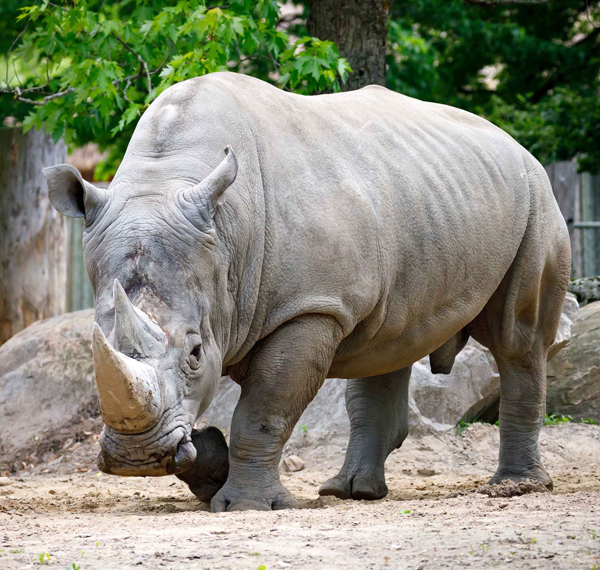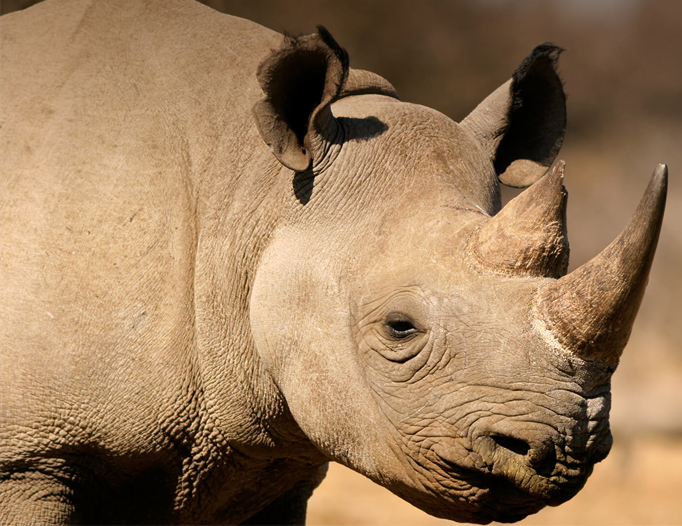Total Weight
Height
Diet
Lifespan
Total Weight
Height
Diet
Lifespan
Sanjay Gandhi Biological Park, Patna is famous for successful conservation breeding of Greater one-horned rhinoceros. In the mid of year 1979, this Park received one pair of rhino named 'Kancha' and 'Kanchi' from state of Assam. Both these rhinos were subadult. Almost aer 3 years, in the year 1982 one rescued rhino (named Raju) from Beiah forest (at present Valmiki Tiger Reserve) came to this zoo, which led to the start of conservation breeding of rhino in this park. In the year 1988 one female rhino (Hartali) took birth from successful conjugation of Raju and Kanchi.


Park management is very sensitive towards inbreeding of rhinos. To improve genetic diversity, one male rhino, 'Ayodhya,' and one female rhino, 'Gairi,' were brought to this park under the animal exchange program from Delhi Zoo and San Diego Zoo, U.S.A., respectively.
Sanjay Gandhi Biological Park, Patna, has provided rhinos to Delhi, Kanpur, Ranchi, Hyderabad, Kevadia Zoo, and
even to countries like the U.S.A.
At present, Sanjay Gandhi Biological Park has 8 male and 5 female rhinos. Park management is always striving to sustain the
captive one-horned rhino population by providing a natural environment, including a muddy moat area, a clean night house, and by creating a dedicated conservation breeding center.
Explore the fascinating world of rhinos, the ancient giants of the animal kingdom.
A strong, thick-skinned giant with powerful horn and calm presence.
| Attribute | Details |
|---|---|
| Weight | Male: 1,800 - 2,500 kg, Female: 1,400 - 2,000 kg |
| Height | 5 - 6 feet at the shoulder |
| Diet | Grasses, leaves, shoots, and fruits |
| Lifespan | 35 - 40 years in the wild, up to 45 years in captivity |
| Conservation Status | Varies by species — some Critically Endangered |
| Population in the Wild | Estimated around 27,000 across Africa and Asia |
| Social Structure | Generally solitary, though some species form small groups |
| Unique Behavior | Use their horns for defense and digging for water or minerals |
| Hunting Pattern | Herbivores — grazing for hours daily, especially in early morning and late evening |
| Mane Equivalent | Thick, armor-like skin with folds for added protection |
| Closest Relatives | Tapirs and Horses — all belong to the Perissodactyla order |
Rhinos are herbivores, meaning they rely entirely on plant-based food for survival. Their diet varies depending on the species and habitat, but generally, they feed on grasses, leaves, twigs, fruits, and shrubs. Grass forms the primary diet for white rhinos, while black rhinos prefer browsing on bushes, shrubs, and trees.
Rhinos use their strong lips — broad for grazers and pointed for browsers — to pluck grass, leaves, and small branches. Their massive bodies require them to consume large amounts of food daily, often grazing or browsing for hours in the early morning and late evening.
Although they need water regularly, some rhino species, especially those in drier habitats, can survive for days by obtaining moisture directly from plants.
Open Now
All visits to Patna Zoo help fund our work both at the zoo and worldwide.